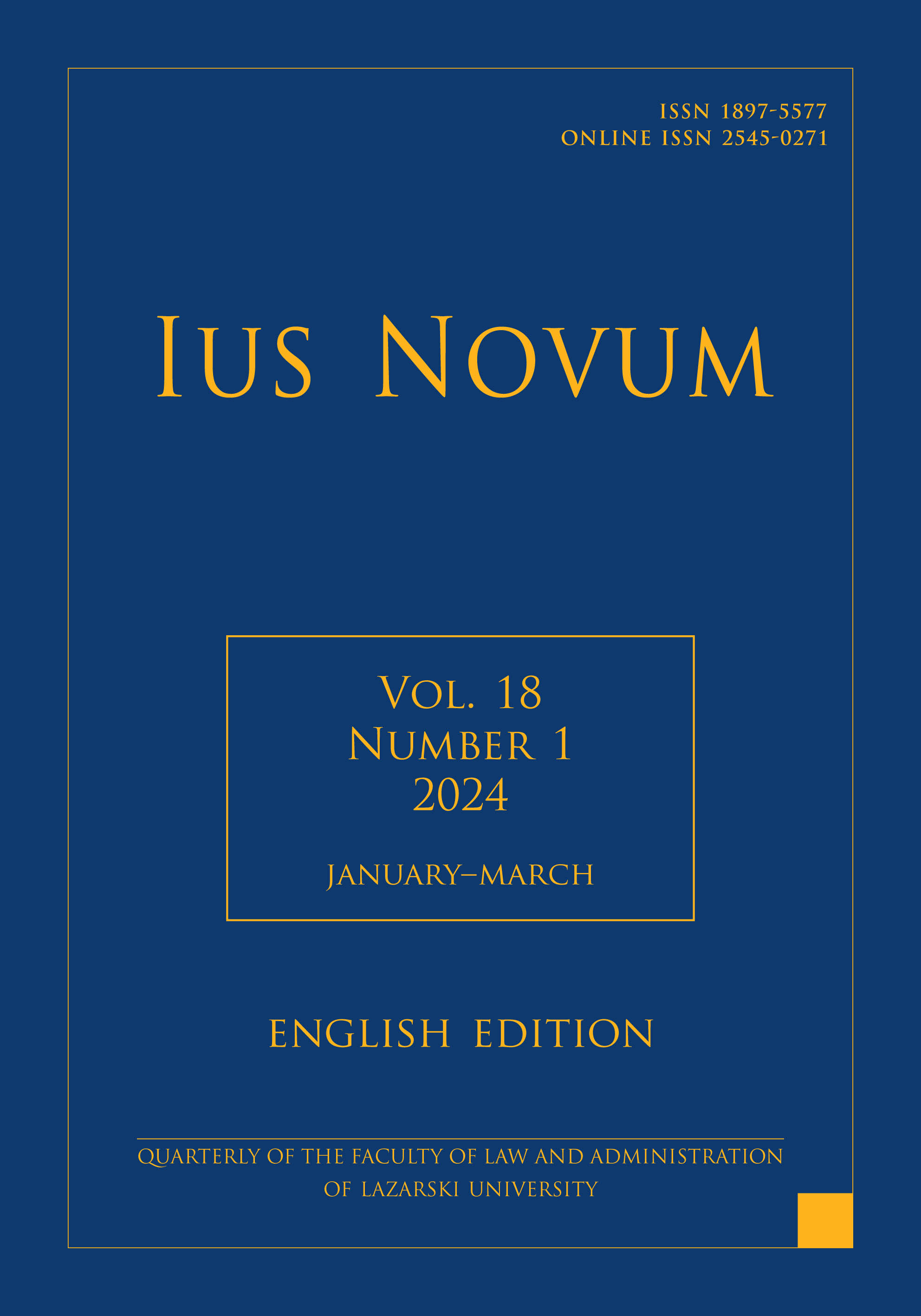Abstrakt
The subject of this study is the criminal law issue of exploiting prostitution practised by humanoid robots. Interest in this issue stems from two main reasons. Firstly, the development of new technologies, including artificial intelligence capable of self-education, analysis of the surrounding reality, and decision-making necessitates the consideration of its legal subjectivity. Secondly, the emergence of brothels employing humanoid robots prompts reflection on the criminal responsibility of those who benefit from the prostitution facilitated by them. This article aims to highlight the phenomenon of using humanoid robots in prostitution, offer a criminal law assessment of such behaviour from the perspective of Polish criminal law, and suggest the direction for the development of domestic criminal law to accommodate this phenomenon in the future. Additionally, it addresses the issue of criminal liability for harm caused by a humanoid robot equipped with artificial intelligence while providing sexual services. The article predominantly employs the dogmatic-legal method, performing an exegesis of the provisions of Article 204 of the Criminal Code in the context of the issue signalled. The analyses have concluded that this norm does not encompass in which the perpetrator facilitates, induces prostitution of a humanoid robot or derives financial benefits from such activities, despite such behaviour being detrimental to morality, the fundamental good protected under Article 204 of the Criminal Code. De lege lata, a humanoid robot may also not be subject to criminal liability if it harms a person using its sexual services, as such an ‘essence’ does not align with the current structure of crime and the concept of criminal punishment. However, the liability of manufacturers or users of such devices is not ruled out. It should be noted that as humanoid robots become more autonomous, holding producers or users criminally liable for damages they cause becomes less justifiable, and the applicability of artificial intelligence liability similar to the criminal liability of legal persons becomes more relevant.
Bibliografia
Antoniszyn, M., Marek, A., Prostytucja w świetle badań kryminologicznych, Warszawa, 1985.
Auleytner, A., ‘Can a robot incur criminal liability’, Law and Standards, 2017, No. 12.
Berent, M., Filar, M., in: Filar, M. (ed.), Kodeks karny. Komentarz, Warszawa, 2016.
Bielski, M., in: Wróbel, W., Zoll, A. (eds), Kodeks karny. Część szczególna. Tom II. Komentarz do art. 117–211a, Warszawa, 2017.
Budyn-Kulik, M., Kulik, M., in: Królikowski, M., Zawłocki, R. (eds), Kodeks karny. Część szczególna. Tom II. Komentarz do art. 117–221, Warszawa, 2023, commentary to Article 204 CC, thesis 5, Legalis 2023.
Charkowska, K., Zjawisko prostytucji w doświadczenia prostytuujących się kobiet, Kraków, 2010.
Filipkowski, W., ‘Prawo karne wobec sztucznej inteligencji’, in: Lai, L., Świerczyński, M. (eds), Prawo sztucznej inteligencji, Warszawa, 2020.
Giannini, A., Kwik, J., ‘Negligence failures and negligence fixes. A comparative analysis of criminal regulation of AI and autonomous vehicles’, Criminal Law Forum, 2023, No. 34.
Hallevy, G., ‘The criminal liability of Artificial Intelligence Entities – from science fiction to legal social control’, Acron Intellectual Property Journal, 2016, Vol. 4, Issue 2, Article 1.
Hilgendorf, E., ‘Introduction: Digitization and the Law – a European Perspective’, in: Hilgendorf, E., Feldle, E. (eds), Robotik und Recht. Digitization and the Law, 2018, Vol. 15.
Hypś, S., in: Grześkowiak, A., Wiak, K. (eds), Kodeks karny. Komentarz, Warszawa, 2020, commentary to Article 204, thesis 4, Legalis.
Jankowska-Prochot, I., ‘Odpowiedzialność karna a działalność autonomicznych robotów. Wyzwania w polskim i światowym dyskursie naukowym’, in: Chmielnicki, P., Minich, D. (eds), Prawo jako projekt przyszłości, Warszawa, 2022.
Kłączyńska, N., in: Kodeks karny. Część szczególna. Komentarz, Warszawa, 2014.
Kowalczyk-Jamnicka, M., Społeczno-kulturowe uwarunkowania prostytucji w Polsce, Bydgoszcz, 1998.
Piesiewicz, P.F., ‘Przestępstwo w wirtualnym świecie’, in: Gardocki, L. et al. (eds), Aktualne zagadnienia prawa karnego materialnego i procesowego, Warszawa, 2009.
Piórkowska-Flieger, J., ‘Tak zwane przestępstwa okołoprostytucyjne’, in: Mozgawa, M. (ed.), Prostytucja, Warszawa, 2014.
Radutniy, O.E., ‘Adaptation of criminal and civil law in view of scientific-technical progres (artificial intelligence, DAO and digital human)’, Проблеми законності, 2019, Вип. 144.
Sobczak, J., ‘Odpowiedzialność karna za przestępstwa popełnione w sieci: Czy można zgwałcić awatara?’, in: Mazurskiewicz, J., Szymaniec, P. (eds), Prawne i administracyjne aspekty komunikacji elektronicznej, Wałbrzych, 2018.
Sobczak, J., ‘Prostytucja w internecine’, in: Mozgawa, M. (ed.), Prostytucja, Warszawa, 2014.
Warylewski, J., Nazar, K., in: Stefański, R.A. (ed.), Kodeks karny. Komentarz, Warszawa, 2023, Legalis 2023.
Warylewski, J., in: Stefański, R.A. (ed.), Kodeks karny. Komentarz, Warszawa, 2015.
Warylewski, J., in: Warylewski, J. (ed.), System Prawa Karnego. Tom 10. Przestępstwa przeciwko dobrom indywidualnym, Warszawa, 2016.

Utwór dostępny jest na licencji Creative Commons Uznanie autorstwa – Użycie niekomercyjne – Na tych samych warunkach 4.0 Międzynarodowe.

